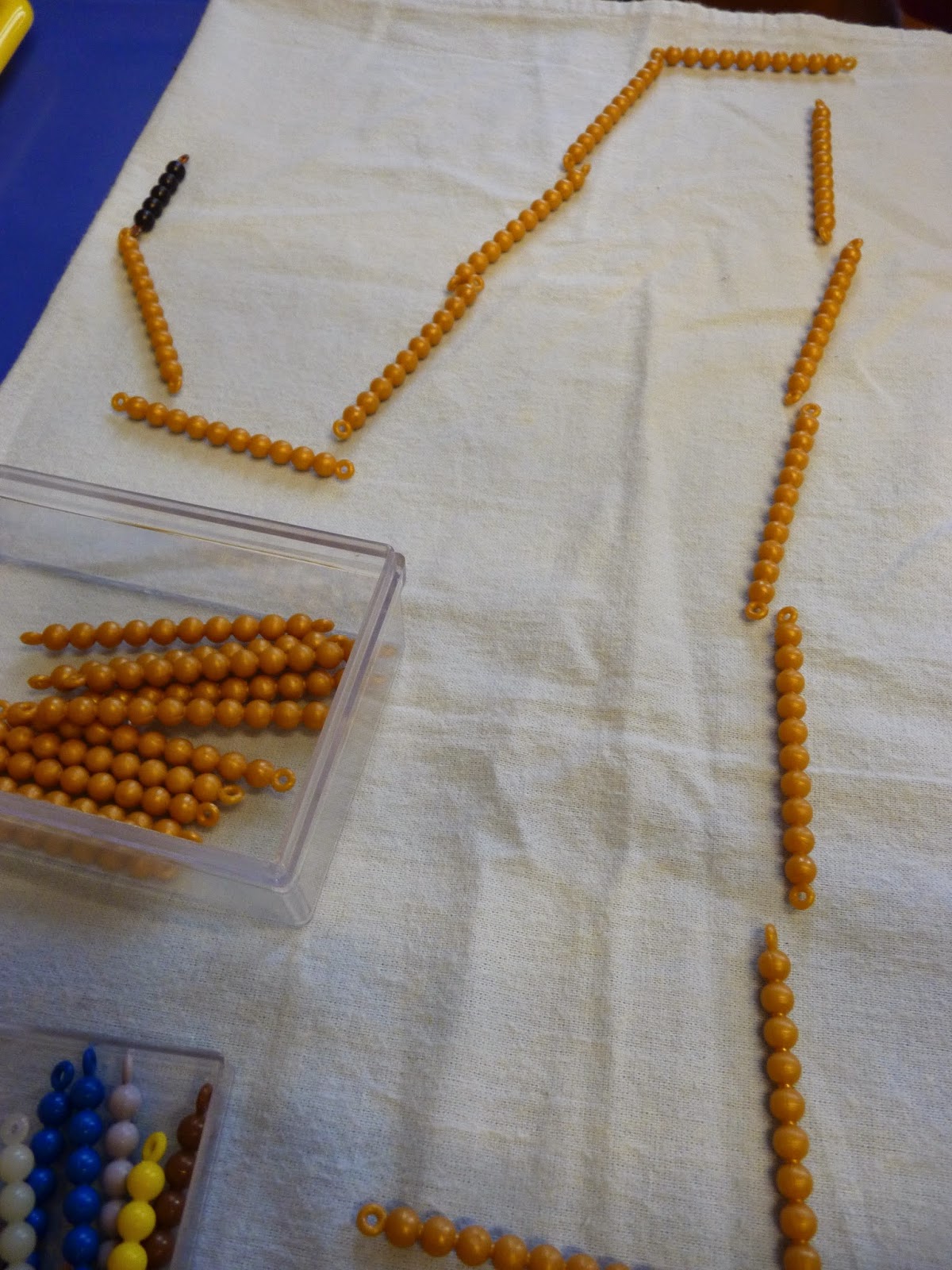For some time already Ania's been ready to learn more about addition. She's been adding together all kinds of things - blocks, pencils, toys, people, cars...
Seeing that she is interested in more math I decided to introduce her to the so called Montessori Addition Snake Game. Remembering how Zosia and Jaś loved working with this material I was sure that Ania will also like it. And I was right, since I've introduced the work to her, she's been doing it every day!
What is needed for the Addition Snake Game?
Materials:
- A box with a few sets of Short Bead Stairs.
- A box with the Black and White Bead Stair.
- A box with many ten bead bars.
- A special notched card to help in counting and marking.
All 3 boxes with the materials are placed on a tray.
- A mat for working on the table
For a full presentation of the Montessori Addition Snake Game please click HERE.
After laying out the mat on the table, I showed Ania the Black and White Bead Stair which she has never seen before and showed her how to build the 'trangle'.
Next I explained to her that we are going to build a colorful snake with the Short Bead Stair. After I started to place a few colored beads on the mat Ania took over building of the 'snake'.
This is how our layout looked like:
"Now it's time to change the colored snake into the golden snake" - I told Ania. I showed her how to count the colored beads to ten and exchange them with the golden bead bar and the bar fom white and black bead stair.
After a lot of counting the golden snake is ready:
What is the purpose of this game/exercise?
- To familiarize the child with the addition to 10.
- To show that there are many number combinations that can make up 10.
Seeing that she is interested in more math I decided to introduce her to the so called Montessori Addition Snake Game. Remembering how Zosia and Jaś loved working with this material I was sure that Ania will also like it. And I was right, since I've introduced the work to her, she's been doing it every day!
What is needed for the Addition Snake Game?
Materials:
- A box with a few sets of Short Bead Stairs.
- A box with the Black and White Bead Stair.
- A box with many ten bead bars.
- A special notched card to help in counting and marking.
All 3 boxes with the materials are placed on a tray.
- A mat for working on the table
For a full presentation of the Montessori Addition Snake Game please click HERE.
After laying out the mat on the table, I showed Ania the Black and White Bead Stair which she has never seen before and showed her how to build the 'trangle'.
Next I explained to her that we are going to build a colorful snake with the Short Bead Stair. After I started to place a few colored beads on the mat Ania took over building of the 'snake'.
This is how our layout looked like:
"Now it's time to change the colored snake into the golden snake" - I told Ania. I showed her how to count the colored beads to ten and exchange them with the golden bead bar and the bar fom white and black bead stair.
After a lot of counting the golden snake is ready:
What is the purpose of this game/exercise?
- To familiarize the child with the addition to 10.
- To show that there are many number combinations that can make up 10.






Comments
Post a Comment